Plush Cell Model

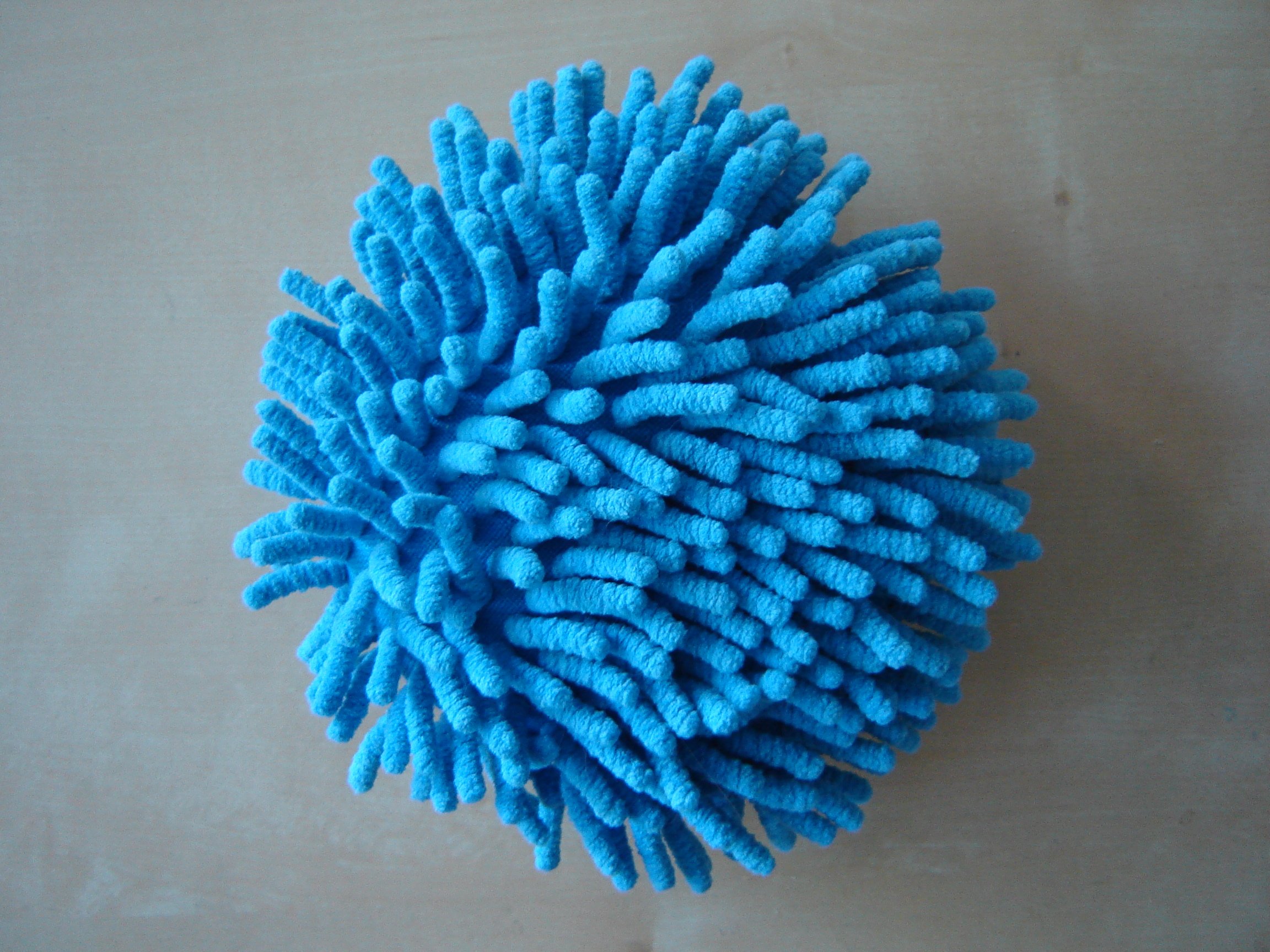



A soft and cuddly animal cell model perfect for those geeky science types. This is great as a teaching tool for students or if you are a student and need a cell model for a school science project.
Material:



- Felt
- Fabric for the main body of the cell -I used flannel
- Toy stuffing
- Yarn
- Thread
- Embroidery thread
- Scissors
- Pins and needles
- Template for organelles (see celltemplate.pdf below)
You can use a sewing machine to attach the larger organelles, but the smaller ones may need to be hand stitched. I mostly used hemming stitches and in some cases running stitches along the edge of the felt. Click here for examples of these stitches
Downloads
Cell Body
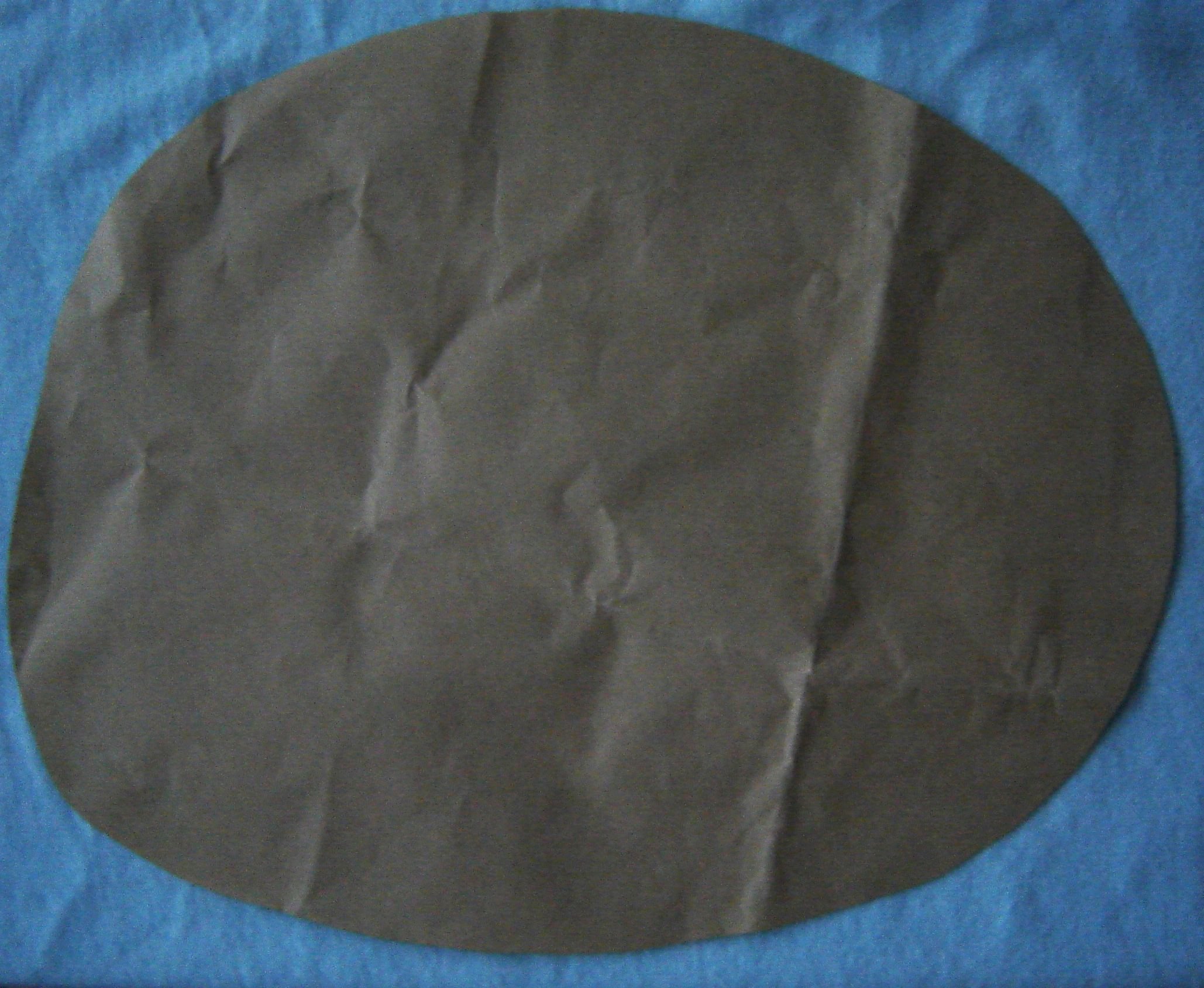

Cut out two equal size pieces of fabric for the main body of the cell (one piece is to be a cross-section of the internal portion of the cell, the other will be the outer cell surface), they can be circular, oval, squarish or irregular shaped depending on the type of cell that you want to make. Just make sure that they are large enough to fit all of the organelles leaving room for the seam.
Nucleus, Nucleoli and Chromatin









Nucleus:
The nucleus is a membrane bound organelle that holds the cells DNA.
Nucleolus
The nucleolus is the site of ribosomal RNA synthesis.
Chromatin
Chromatin consists of DNA and its associated proteins.
Cutting
The nucleus is a membrane bound organelle that holds the cells DNA.
Nucleolus
The nucleolus is the site of ribosomal RNA synthesis.
Chromatin
Chromatin consists of DNA and its associated proteins.
Cutting
- Cut out a large circle of felt, this will be the largest component of the cell; the nucleus.
- Cut out a circle of felt in a different colour with roughly 1/4 the diameter of the nucleus, this will be the nucleolus.
- Cut out several little 'X' and 'V' shaped felt pieces of a third colour. These are the chromosomes(chromatin).
- First sew the nucleoli to the nucleus.
- Then sew the chromosomes onto the nucleus.
- Then sew the whole thing to the the cell (that blue piece of fabric from step 2).
Rough Endoplasmic Reticulum



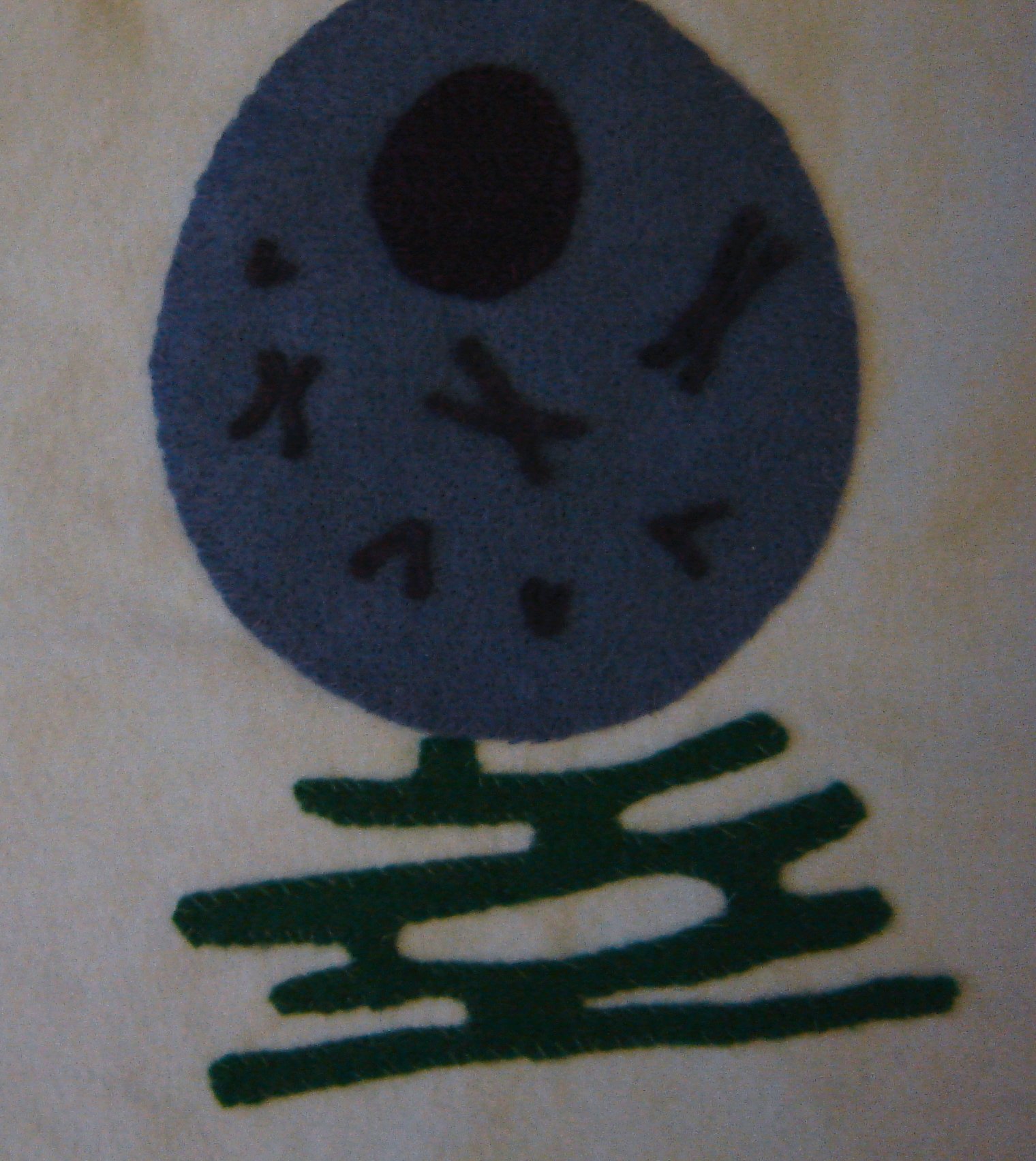
The rough endoplasmic reticulum is the site for the synthesis of proteins destined for transport (to the cell membrane, to other organelles or out of the cell). The rough ER is connected to the nuclear membrane and the surface of the rough ER is covered in ribosomes (see step 10) giving it a "rough" appearance when viewed with an electron microscope.
- Placing the template on the felt, cut out the rough endoplasmic reticulum.
- Make sure part of the rough endoplasmic reticulum is touching the nucleus, sew it onto the main body of the cell.
Smooth Endoplastic Reticulum



The smooth endoplasmic reticulum houses the enzymes needed for lipid, carbohydrate, and steroid synthesis. In liver cells, the smooth ER is also involved in drug detoxification.
- Placing the template on the felt, cut out the smooth endoplasmic reticulum.
- Arrange the parts of the smooth endoplasmic reticulum on the main body of the cell and sew it in place.
Mitochondria





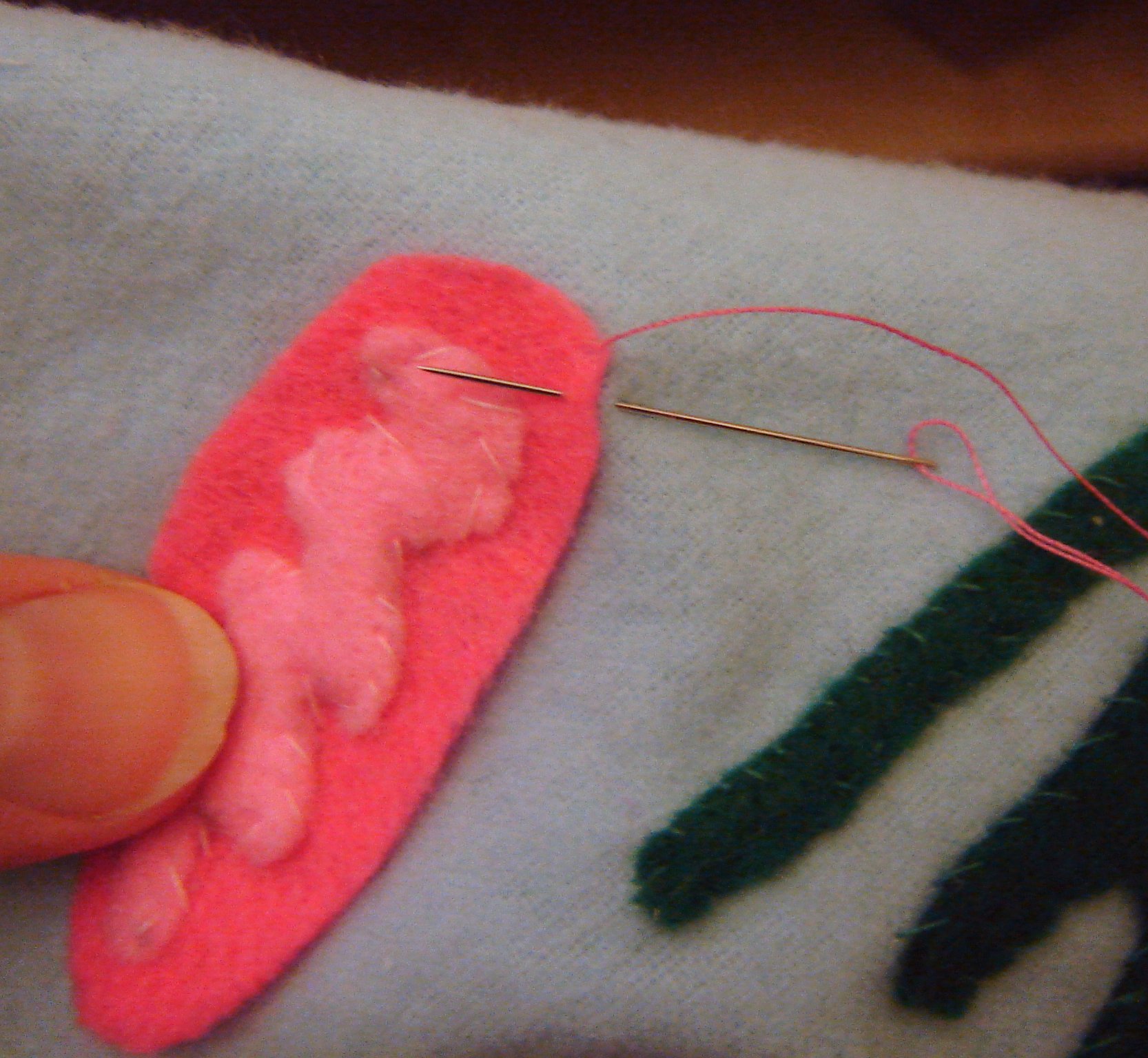

The main role (but not the only function) of mitochondria is ATP (adenosine triphosphate) production. ATP is the cell's "energy source" hence the mitochondria is considered to be the power house of the cell. Rumor has it that this interesting little organelle was once a bacterium that was eaten by another cell. A fact supporting this theory is that mitochondria has it's own DNA which happens to be circular like that of a bacteria.
- Placing the template on the felt, cut out the outer edge of the mitochondria
- On a similar coloured piece of felt cut out the cristae of the mitochondria (you may need to cut out this part of the template first).
- Sew the cristae onto the mitochondria first then sew the combined piece onto the main body of the cell.
Golgi Apparatus

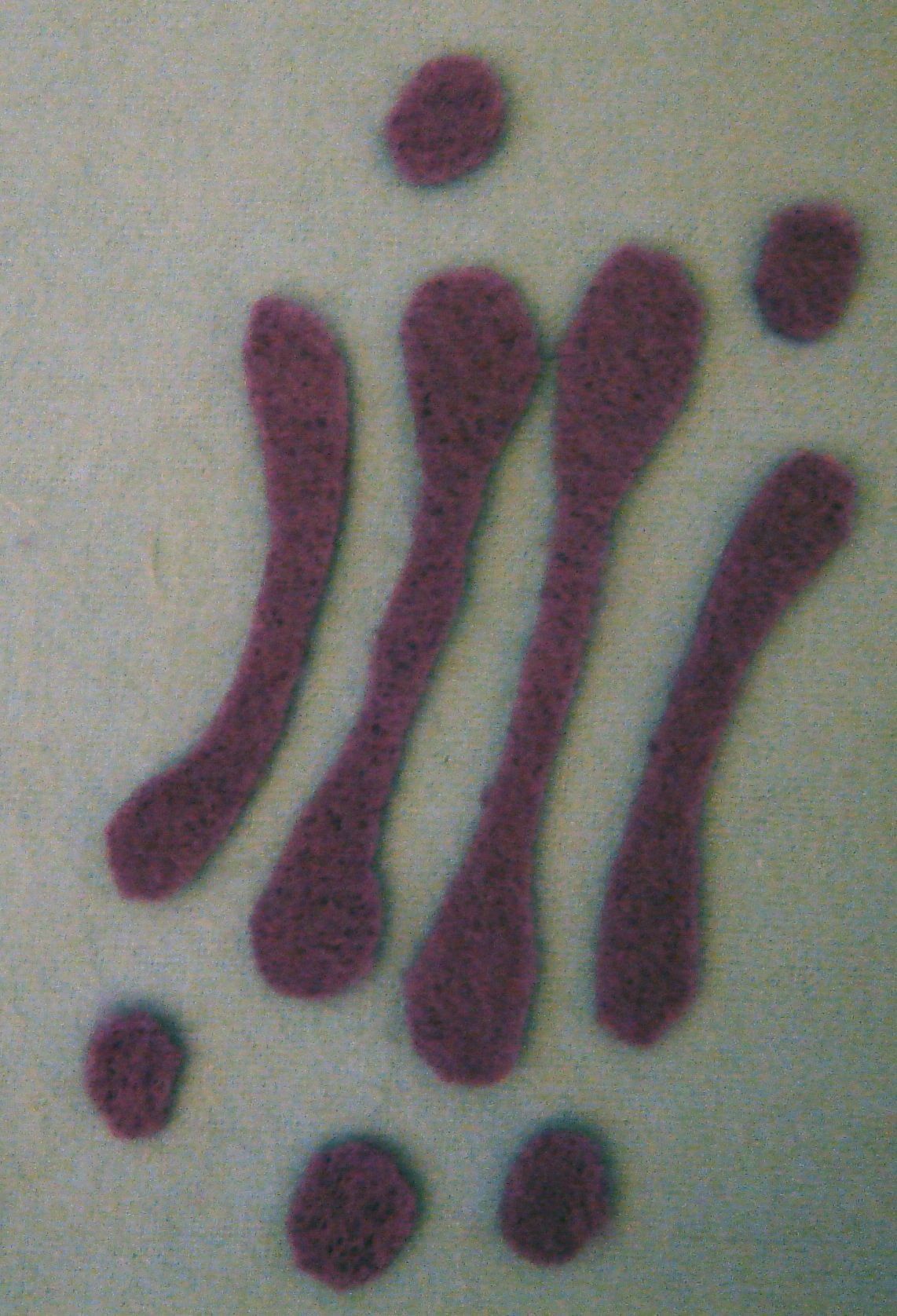
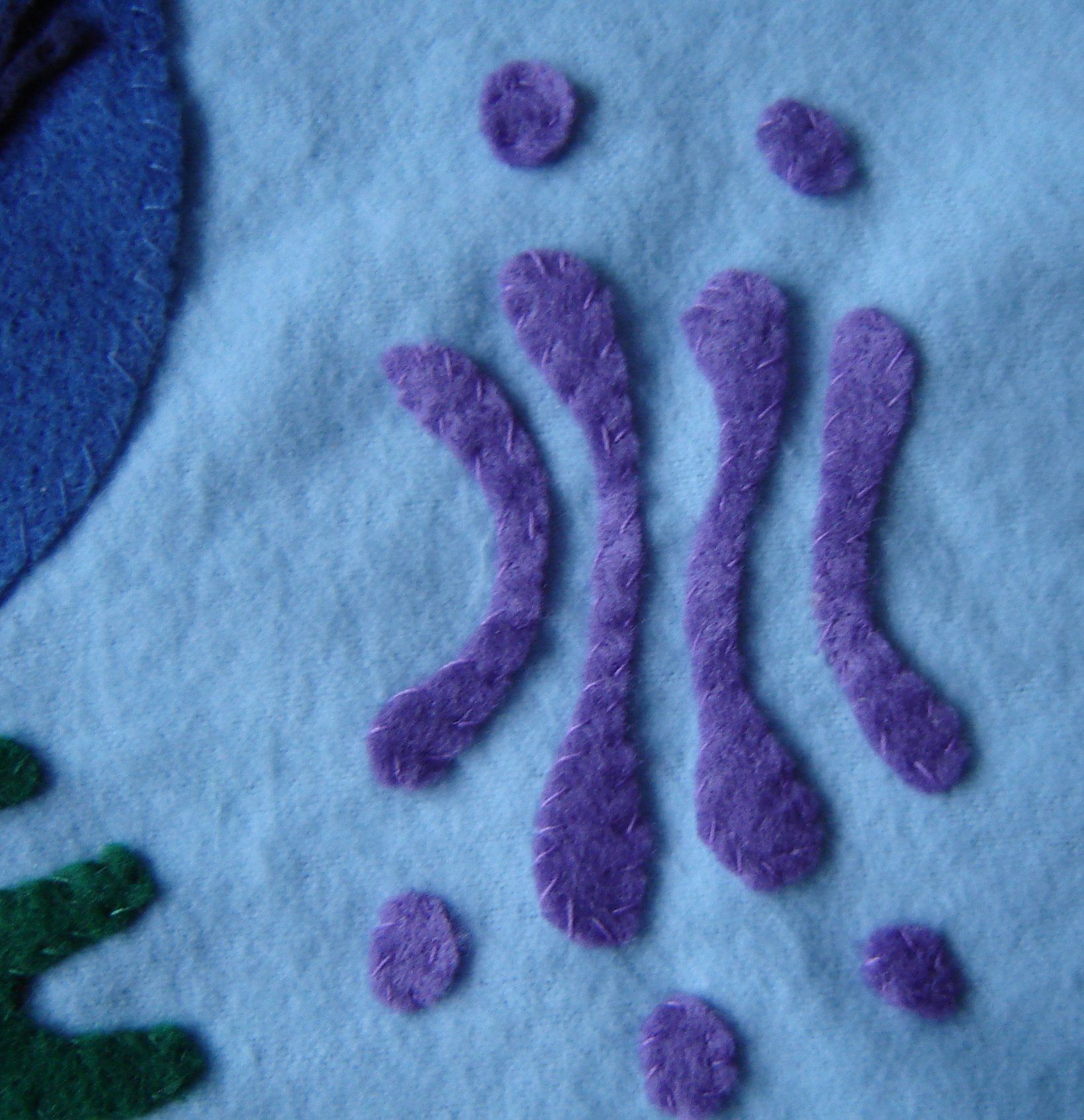
The Golgi apparatus (aka Golgi complex or Golgi bodies) is responsible for collecting, packaging, and distributing molecules synthesized in the cell.
- Placing the template on the felt, cut out the Golgi apparatus.
- Arrange the parts of the Golgi apparatus on the main body of the cell and sew it in place.
Centrioles

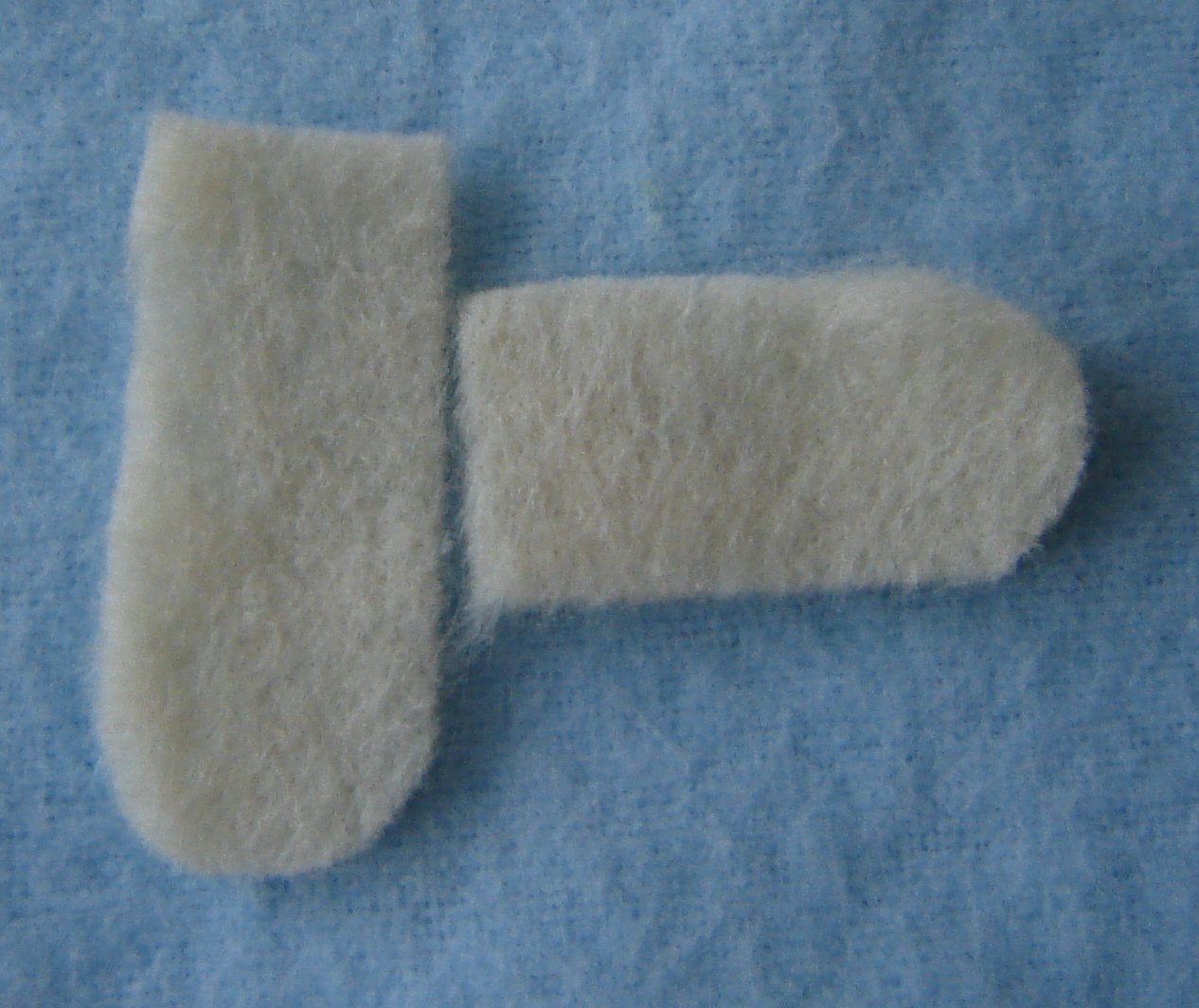


The centrioles (made up from a bundle of microtubules) organizes the cytoskeleton and spindle fibres during cell division.
- Placing the templates on the felt, cut out the two centrioles.
- Stitch lines along each centriole with a darker piece of thread to create striations (microtubules).
- Arrange the two centrioles perpendicular to one another on the main body of the cell (close to the nucleus) and sew it in place.
Vesicles/Lysosomes
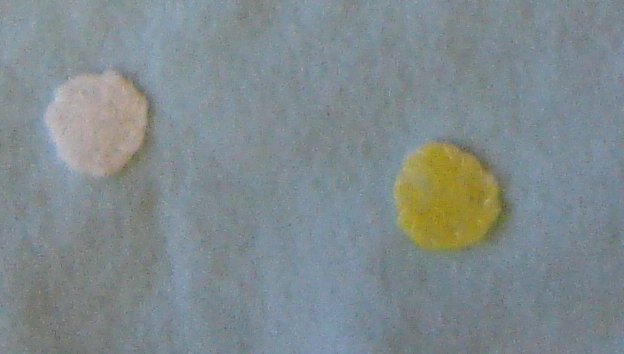
-Vesicles are little sacs used for transporting and storing substance in the cell.
-Lysosomes are little sacs containing digestive enzymes used for cleaning up worn-out organelles as well as phagocytosis of bacteria and viruses.
-Lysosomes are little sacs containing digestive enzymes used for cleaning up worn-out organelles as well as phagocytosis of bacteria and viruses.
- Cut out several little circles, they can be different sizes and different colour.
- Scatter these little circles around the cell and sew in place.
Ribosomes



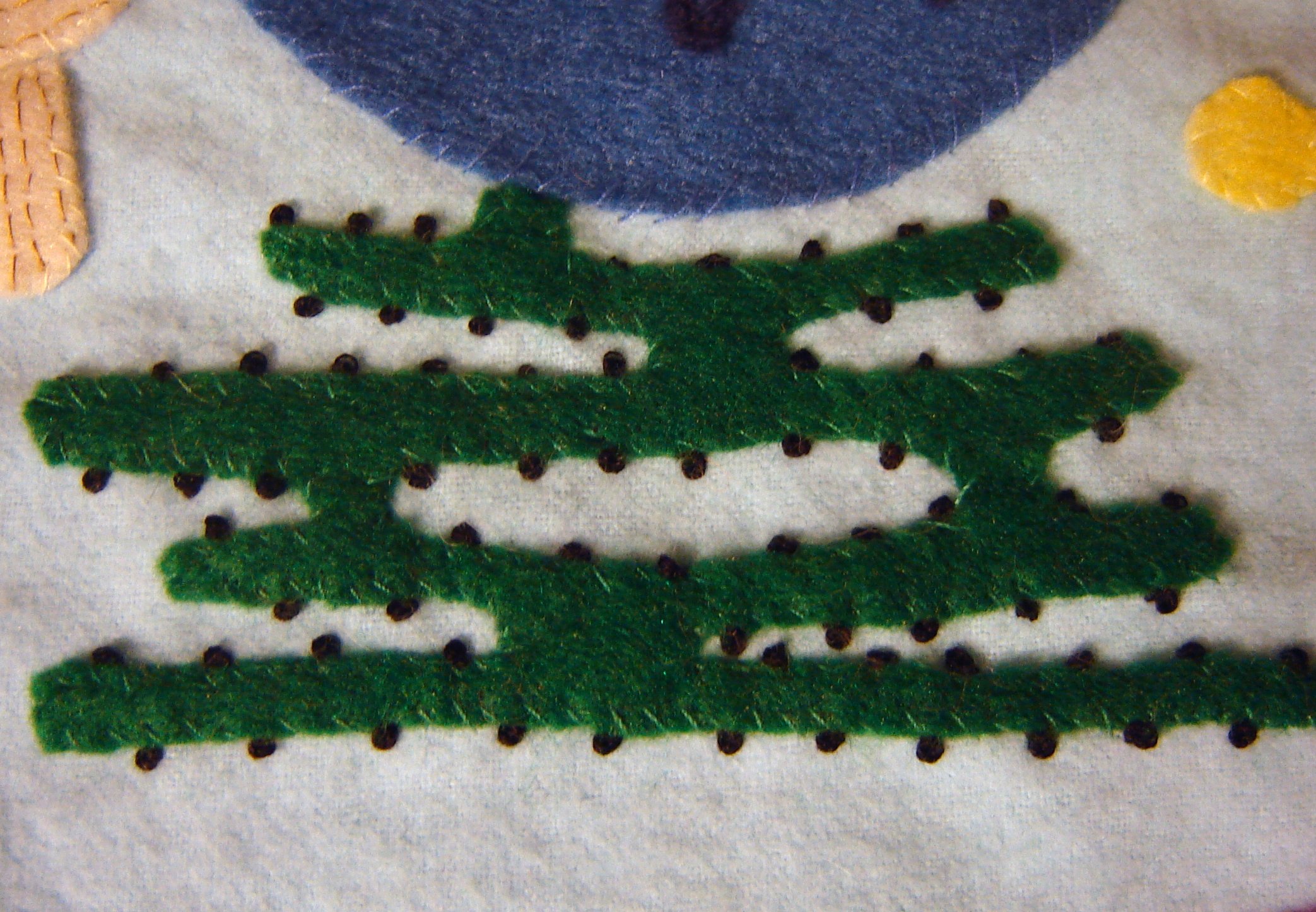

Protein aggregates consisting of RNA and protein that carries out protein synthesis (translation).
- Using a embroidery thread make french knots along the outer edge of the rough endoplasmic reticulum.
- From the underside of the fabric pull the threaded needle through.
- Loop the thread around the needle twice.
- Poke the needle down through the fabric (not through the same hole).
Outer Cell Surface
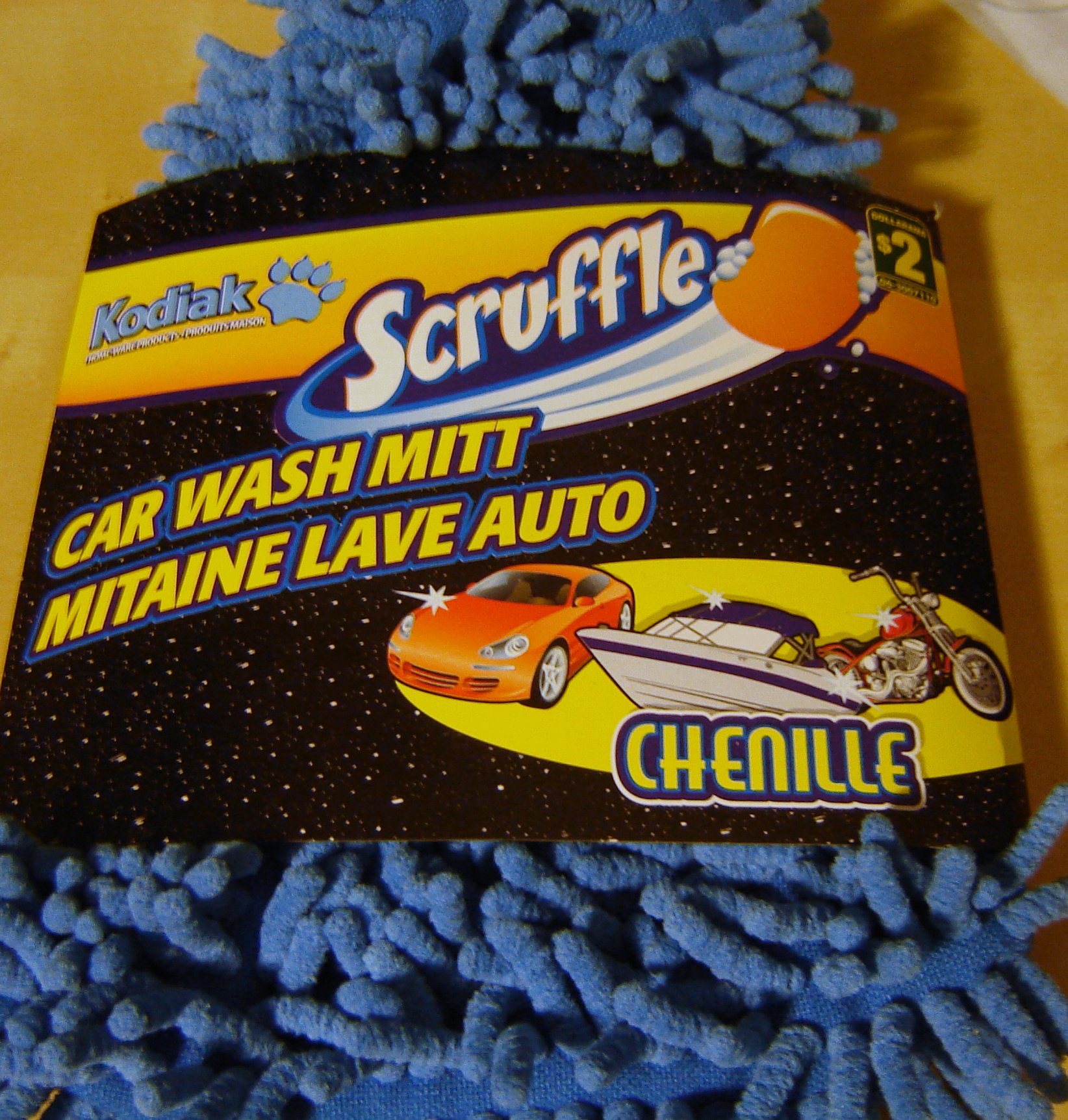






The cell surface is covered in a variety of components; cilia, micro villi, cell surface receptors, signaling proteins, cell surface markers, transmembrane proteins, etc.
- I found a car wash mitt at a dollar store that had little chenille bits that looked to me like cilia or micro villi. So I cut several off and sewed them to the outer surface of the cell.
- I also used short strands of yarn on the cell surface. I just pulled one end of the strand through the fabric, knotted it on the back side and trimmed it to the right length.
Putting It Together




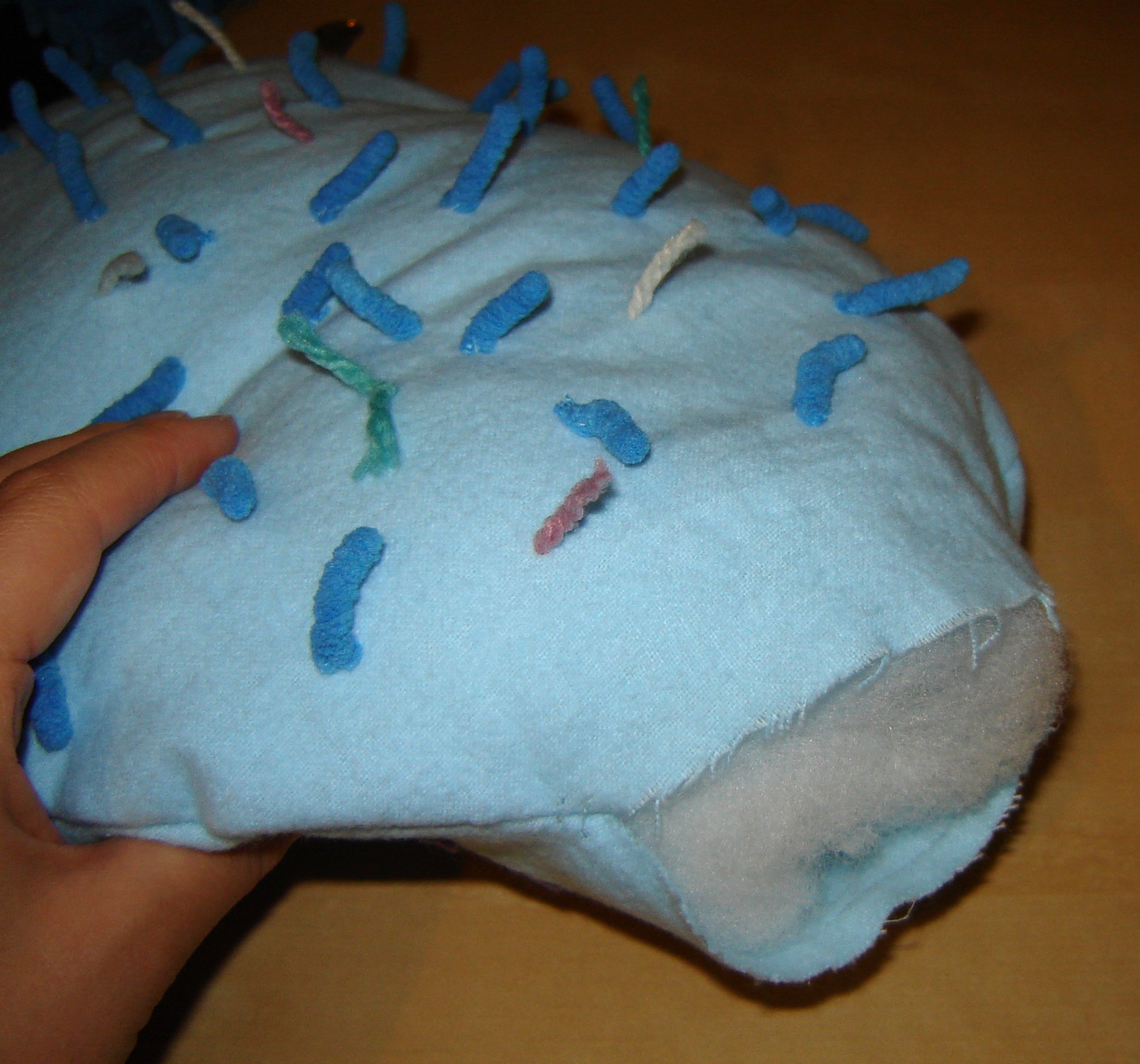

- Place both sides of the cell together facing each other and sew together leaving a small opening.
- Turn the fabric right side out and stuff with toy stuffing.
- When it is plump enough sew it shut.
Other Ideas







Microtubules and other stuff in the cytoplasm
I did not add any microtubules to my cell because I thought it would look too cluttered but you can by simply sewing several strands of yarn in between the other organelles. Likewise you can add a few french knot ribosomes throughout the cytoplasm.
Labels
You can add labels to your cell if you'd like. Tape or glue the organelle names on to small Velcro strips and they stick them onto the felt.
You can also just use push pins with the labels taped on.
Other cell types
Plant cells, bacteria, neurons, white, or red blood cells are a few examples of other cells you can make. Make sure you read up on the structure and functions of these cells. Plant cells have a cell wall and have chloroplasts and large vacuoles. Bacteria are more simple and lack membrane bound organelles.
I did not add any microtubules to my cell because I thought it would look too cluttered but you can by simply sewing several strands of yarn in between the other organelles. Likewise you can add a few french knot ribosomes throughout the cytoplasm.
Labels
You can add labels to your cell if you'd like. Tape or glue the organelle names on to small Velcro strips and they stick them onto the felt.
You can also just use push pins with the labels taped on.
Other cell types
Plant cells, bacteria, neurons, white, or red blood cells are a few examples of other cells you can make. Make sure you read up on the structure and functions of these cells. Plant cells have a cell wall and have chloroplasts and large vacuoles. Bacteria are more simple and lack membrane bound organelles.